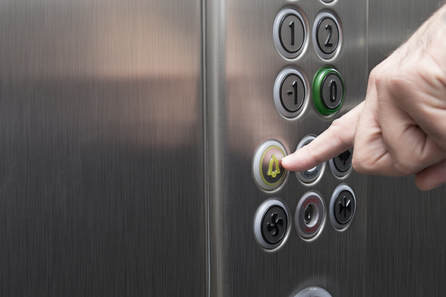|
Claustrophobia I’m in the lounge at the Atlanta airport, on my way to New York. There is a two-and-a-half-hour flight ahead of me—I can’t tell you how much I hate flying. Hi, my name is Michelle Dim-St. Pierre, and I’m claustrophobic. I am afraid of closed spaces. It all started when I was in my mid-twenties. I was on a day shift, at the hospital, working in the Post Anesthesia Care Unit (PACU), also known as the Recovery Room. As part of my regular duties, I had to transfer patients from the PACU to the floor. My duties never got in my way. I love nursing and whatever comes with it. That day, I transported a patient to the floor using the elevator. Out of habit, my eyes followed the elevator’s progress on the lighted display above its door: 1, 2, and, boom! The elevator stopped, trapping me and my groggy patient and his family inside. Instinctively, I started to push some buttons on the elevator panel, hoping it would resume its ride. And wouldn’t you know it, the double doors opened, one to the right and the other to the left. You might think it was a relief. But it was not! Because behind the door there was a wall, a big, solid, white wall with about a 20-inch opening at its bottom—most likely the floor below. I tried to push the buttons on the panel, but nothing happened. The stress started to get to me. My patient appeared asleep and comfortable, unlike his family that had a lot to say and ask—I heard them, but it was as if they were a swarm of bees hovering around me. My breathing became difficult. I felt short of breath and found myself gasping for air. I looked at my patient. Something didn’t seem right. I looked again; this time I observed his chest. No movement. “What happened?” a family member asked. “I’m not sure,” I answered as I calmly stepped closer to the patient. “He’s not breathing,” another family member yelled. Really? I thought. Thanks for letting me know, it’s not like I don’t see it. “Sir,” I shouted to my patient as I grasped his shoulder and shook him briskly. “I’m telling you he’s not breathing,” that family member assured me. Are you a physician or something, why don’t you take over, or do something? I conversed with him in my thoughts as I reassessed my patient. The elevator was stubborn, refusing to resume its work. The situation became overwhelming. The thought of getting on my knees and crawling out through the 20-inch opening vanished once I realized the risks associated with it—if the elevator restarted while I was crawling out, what would happen then? It would slice me in two! I panicked. My knees weakened, and my palms became sweaty. The summer’s temperature penetrated the elevator walls and added to the situation, causing me to breathe faster. I lowered the bed rails so I could get closer to my patient. I didn’t have an Ambu bag or any other CPR barrier devices. The only way I could bring my patient back was to deliver him some air;mouth-to-mouth was my only option. (Please don’t chew me out yet; I know today’s CPR protocol is different—but this incident happened in the mid-80s when two slow breaths were the first thing to do. You would check for a pulse after that.) I leaned toward the patient, not sure that I, myself, had enough air to share with him. I felt beads of sweat rolling down my neck. My sympathetic nerve system shifted gears making my teeth clench. Will I ever open these jaws again? I needed my jaws to open so I could take a deep breath, seal my lips around my patient’s mouth and deliver two slow breaths to him. But my jaws would not open. I pinched myself until I felt pain... my jaws released and I quickly got back on track, performing CPR on my patient. Finally, my patient responded, just when the elevator started to move. Nurses take many stories from their work to the next day, some of which stay for a longer period of time than others, some even for life. I would never think that the physical discomfort I experienced while being trapped in the elevator would recur in similar circumstances. Soon, I realized that I am claustrophobic. My hope that the situation would get better with time was in vain. It was not long before I started exclusively taking the stairs, avoiding elevators altogether. Next, I began booking vacations only where I could get rooms on lower floors or even better, where I could find ground level resorts. Along with that, I learned that being behind a locked door is not an option either; whether it be in a spa treatment, doctor’s appointment…even a bathroom. While this list is long, flights become one of the most significant issues for me…and of course, the longer the flight, the more significant the problem. Not to mention, the smaller the plane, the more stressed out I get. It’s time to board! Stay tuned for Part II of this blog: How To Manage Claustrophobia. Michelle Leave a Reply. |
Archives
December 2020
AuthorMichelle Categories |



 RSS Feed
RSS Feed